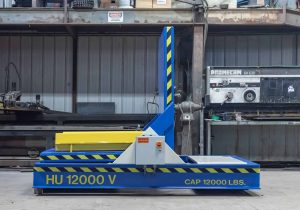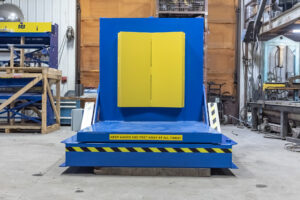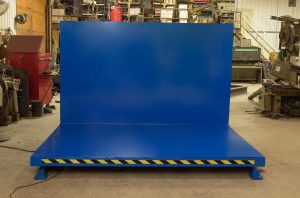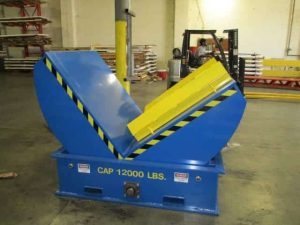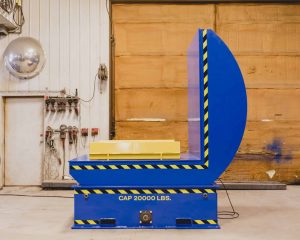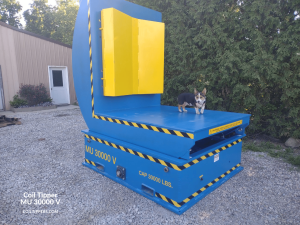Bill Good remembers what it was like to work on the assembly line back in the 80’s when he was in college. “When I started they said: It’s a minimum 40-hour week. You’ll probably have some over time and this is what we pay. Take it or leave it.”
Fast forward thirty some years, and well, the shoe is on the other foot. Good is the vice president of supply for GE Appliances, a Haier company, and the largest appliance manufacturer in North America. Rather than working the line, he now oversees the organization tasked with recruiting, hiring and, with a little luck, retaining associates like his former self to work the line. In recent years, as it became hard to recruit and turnover became an issue at virtually every industrial facility, Good came to realize that the game had changed.
“I grew up in the south during a time when manufacturing was hot, rural and manual,” Good says. “Our priority was working to support our families, and what was left was play time. The current generation values their free time. The value proposition includes more than just pay, but what is the work environment and what is the culture. That formula is different than it was for my generation.”
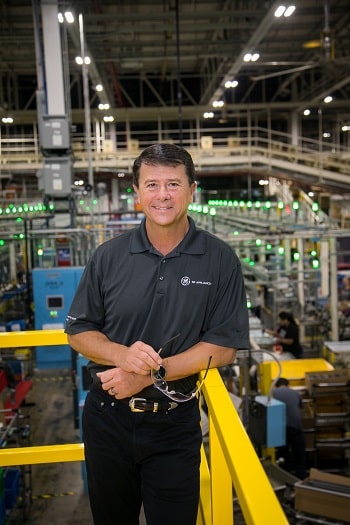
Bill Good, VP of supply, GE Appliances
The shift in the associate value proposition occurred during a time of rapid expansion at GEA. Since 2016, the appliance leader has invested $2 billion in its business, expanding its workforce by 3,000 hourly associates. “That’s a tremendous growth curve,” Good says. “We realized that if we continued to run the same play of making the person fit the work, we’d continue to struggle to fill positions on the line.”
It’s like that old joke: What’s the definition of insanity? Doing the same thing over and over and expecting a different result. Instead, of asking how to make the person fit the work, Good and his team flipped the equation and asked: How can we make the work fit the person?
“We started by writing a problem statement: What’s the problem we’re trying solve?,” he says. “The answer was that we were struggling to hire folks. We then narrowed that down and asked: What populations aren’t we tapping into today? We had to put on our thinking caps and come up with different populations of potential associates.”
Since the problem statement was shared with supervisors and managers across GEA’s plants and distribution centers, the supply chain team has launched at least a half-dozen innovative initiatives that are bearing incremental fruit. Let’s focus on just three.
Giving workers a Lyft: When looking at attrition data, voluntarily or otherwise, an important finding was that for the most part, individuals weren’t leaving for more money at another employer. Rather, the number one reason for turnover was absenteeism: Associates who missed too many shifts were let go. “When we dug into it, we found the main reason people missed shifts was reliable transportation,” Good says. “On the 1st shift in a city like Louisville, you can find alternatives like public transportation. On the off shifts there aren’t good alternatives because there aren’t as many city buses at night.”
Good says the team was surprised to learn how many associates had no vehicle or relied on a ride share to get to work. Rob Fritz, the supply chain HR leader who oversaw the implementation, came up with the idea of subsidizing rides. Since then, GEA has partnered with Lyft, allotting associates $100 a month in $5 increments so that GEA is paying 25%-to-50% of the typical ride. “It’s been super successful,” says Good. “We have a few hundred active users and more than 1,000 who use it now and then.”
“To me, it’s an investment and not an expense,” Good adds. “If I can maintain an associate who is putting in 160 hours per month, the amount we’re spending on transportation is a fraction of what it would take to replace them and get a new associate up to speed.”
To work or not to work: Like most industrial employers, GEA has experimented with temp agencies over the years. In Good’s view, the results have been spotty at best. So, he was skeptical when the leadership team at a cooking products plant in LaFayette, Georgia proposed trying out an app called MyWorkChoice that allowed qualified temporary works to sign up for shifts in 2-hour increments. Have some time between 2PM and 4PM on Thursday? No problem. “Every time I’ve tried to use a part-time workforce, it’s never worked out the way it did on the White Board,” he recalls. Good was also unconvinced you could keep the line productive with part-time associates who came and went in 2-hour increments.
Much to his surprise “we were able to tap into a new population of stay-at-home parents and experienced retirees who needed a couple of days a week,” he recalls. One example was a retired individual who had worked in assembly at Bluebird and Volkswagen. He wanted to work 20 to 24 hours a week, but he also needed flexibility to get his wife who was being treated for cancer to medical appointments.
Good’s other discovery was that the part-time workforce was highly reliable and loyal to the job. As GEA has gained experience with the app, it evolved from 2-hour to 8-hour increments – the logistics of scheduling shorter increments really didn’t work. However, there are 1,500 experienced associates qualified to work the line registered with MyWorkChoice, and on any given day, 200 of those are working. Good estimates that about 7% of the population is working on a part-time basis. “If we hadn’t given this a try, we would never have tapped into this population,” he says.
A refuge at GEA: When the supply chain team began thinking of untapped populations, one idea was to reach into refugee populations. That was particularly applicable to Louisville, in which the faith community actively supports refugees and immigrants, including refugees from Afghanistan, many of whom had supported U.S. troops during the war on terror.
One of the first hires was Edris Akseer, a former Afghani translator who moved his family from Virginia to Louisville after learning from a church community there of GEA’s interest in providing jobs to the refugee community. In addition to working on the line, Edris also served as a translator to new hires from within the community, including the translation of documents. Since then, Good notes, Edris has been promoted to the talent acquisition team, with responsibilities that include hiring and training refugees because of his ability to work across populations.
What’s more, GEA continues to diversify its associate base, tapping into refugee and immigrant communities from Eastern Europe and Africa, to name two. “If you’d walked through one of our plants 10 years ago, it was a typical mix of white and African American workers,” Good says. “If today, you’ll see a Latino population as well as the refugee communities we’re tapping into. We are a much more diverse company as a result of this program.”
These and other programs launched by the GEA supply chain team are working. Yet, they’re supplanting the larger issue, which is that manufacturing as a career is not looked at as favorably as it was when Good was coming up.
As someone who began on the line and has spent his career in manufacturing, Good believes that manufacturing in the U.S. has to launch a campaign to boost its brand if the industry is going to attract the best and brightest and continue to lead. “We have to get the word out that we’re not the same industry where your parents and grandparents worked,” Good says. “Manufacturing jobs offer better wages and benefits than typically offered in a community and provide a work environment that isn’t nearly as physically demanding as it was 20 years ago. We offer people a career path that develops their skills and enables them to achieve their dreams whatever that may be.”
To make that happen, more companies will need to follow GEA’s lead to flip the script and make the work fit the worker rather than the worker fit the work.
Author’s note: Click on the link to learn more about the NextGen Supply Chain conference, where Good presented on GEA’s workforce development efforts.
About the Author

Bob Trebilcock
Bob Trebilcock, Editorial Advisor, has covered materials handling, technology, logistics and supply chain topics for nearly 30 years. In addition to Supply Chain Management Review. He can be reached at [email protected] and 603-852-8976.

